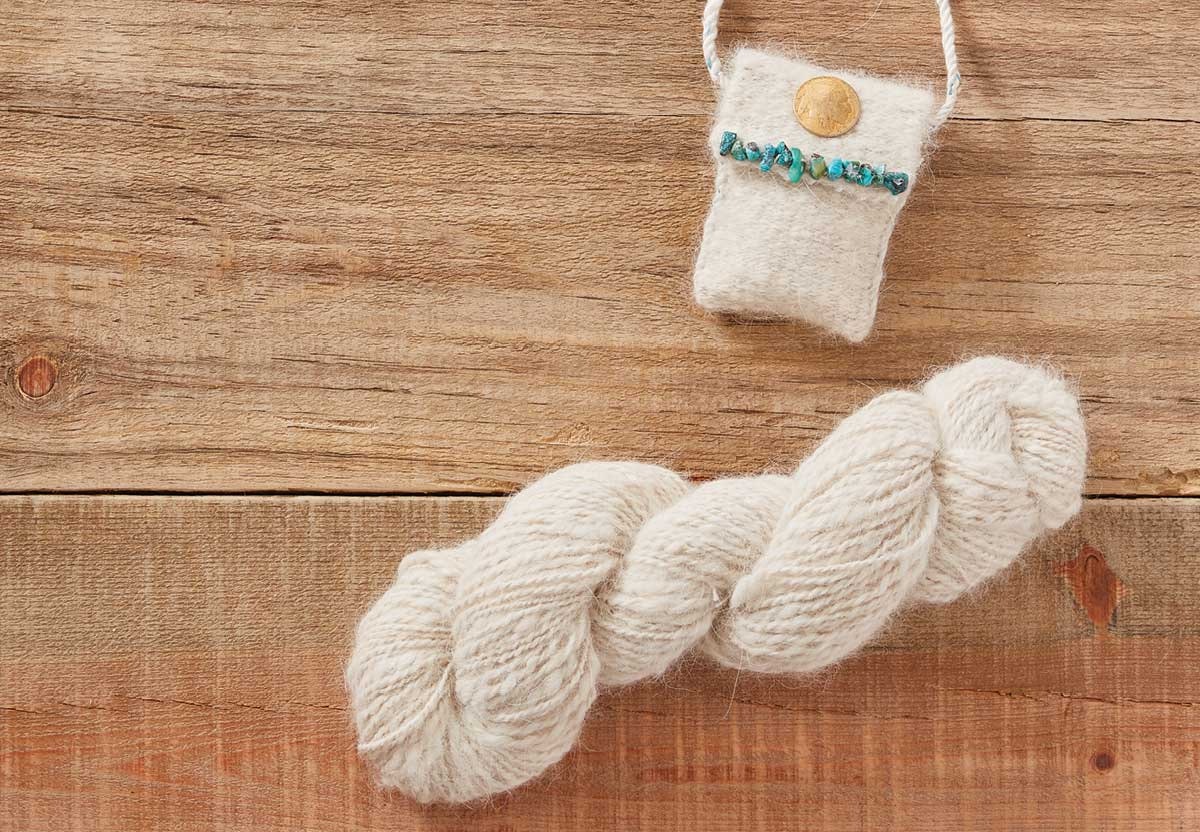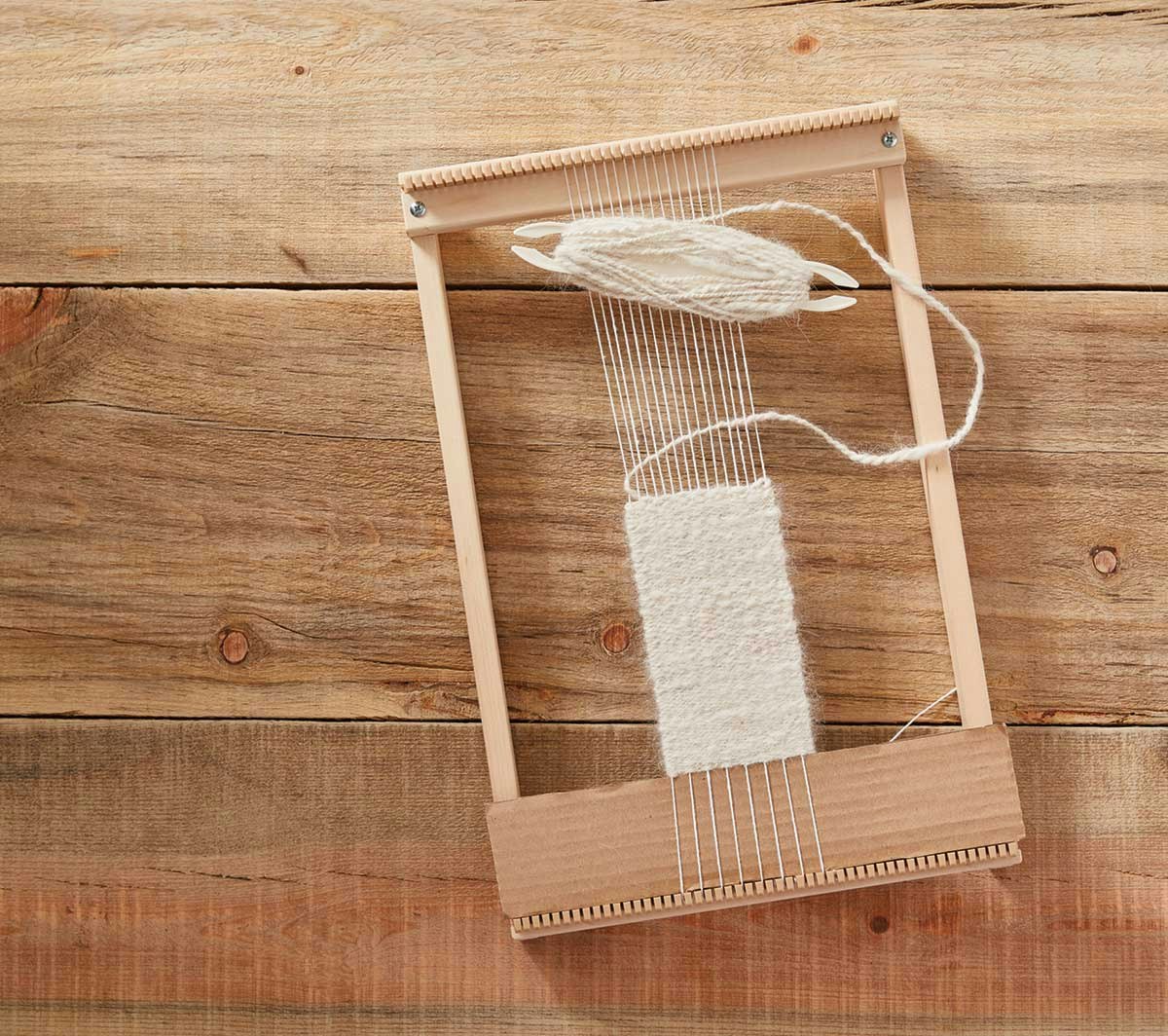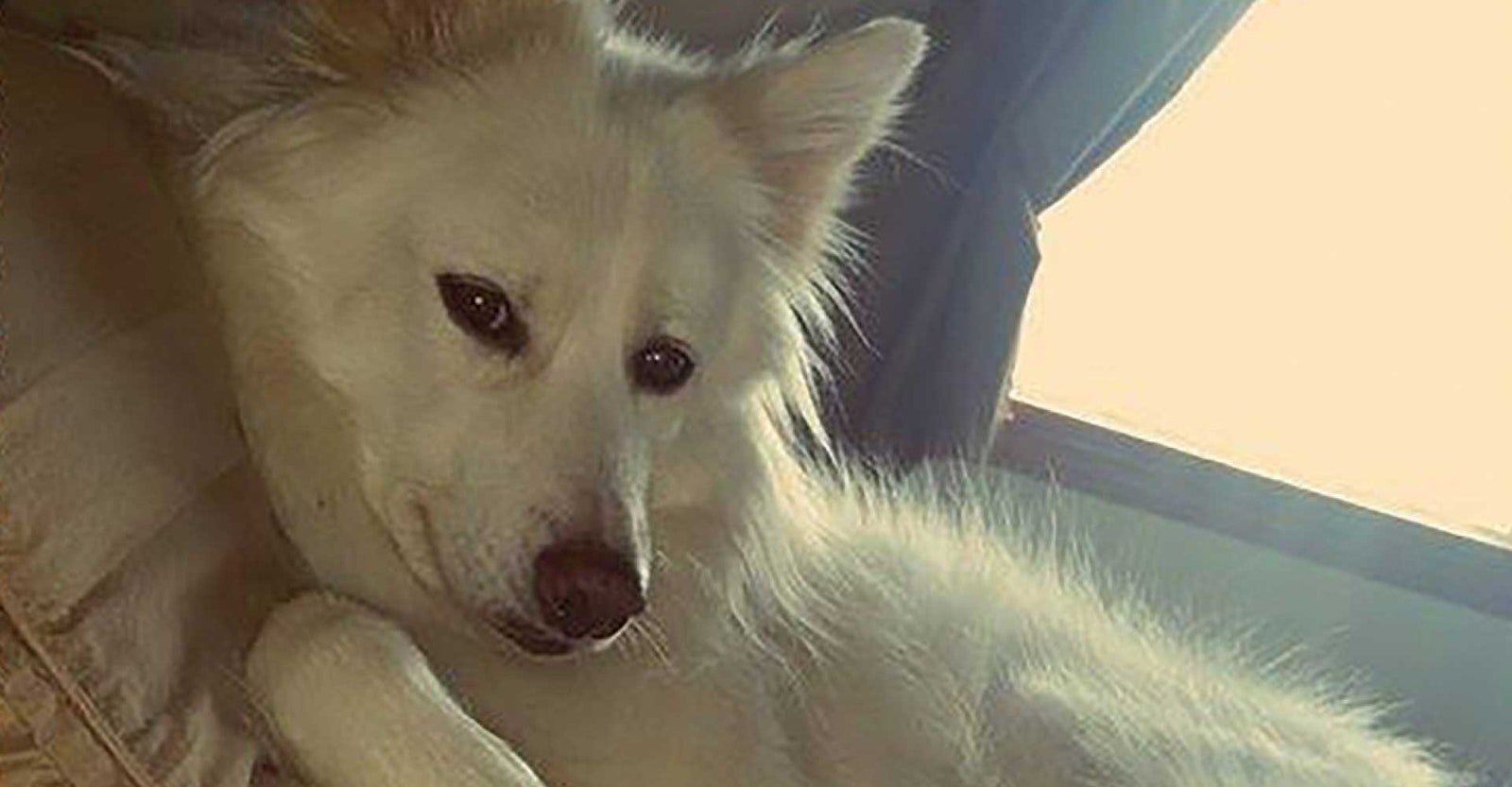A lot of people offer me their pet hair when I tell them that I spin. At first, I got annoyed, thinking that they didn’t really understand spinning. And let’s face it, I am a fiber snob. As I heard of people spinning hair from certain breeds of dog, I was curious but still not convinced. Then I came across Spirit, a beautiful, sweet white wolf mix whose hair is like what I imagine a cloud feels like. My curiosity got the best of me, and I wanted to spin it! Luckily, Spirit’s owner happened to collect her hair and sent me home with a grocery bag full.
Fiber Preparation
I have wanted to weave a small piece on a tapestry loom, and I thought this might be the perfect opportunity. When preparing the fiber, I chose to keep the guard hair in for texture. I tried both spinning from the cloud and handcarding the fiber into rolags, and I found the fiber easier to manage in rolag form.
When carding, I don’t usually allow the cards to touch. I pick up the free fleece from one handcard with the teeth of the opposite card, and as I pull them apart, the wool transfers from the full card to the empty card and is combed in the process. However, I found that with dog fur, I had to mash the teeth of the cards together as if combing, pick up the fur with the empty card, and lift it off the full card after the hairs were combed and aligned. Carding in this manner worked well enough that I needed only one pass before making a rolag.

Tapestry-woven fabric makes a sturdy, textured fabric perfect for a precious amulet bag. Photo by George Boe
Spinning
The staple length of Spirit’s coat is shorter than that of wool but not as short as cotton. The dog hair doesn’t have the same sort of gripping scales on the shaft as wool, and it is slicker than cotton, so it was like learning to spin all over again! I found that a worsted draw was the best way to spin the fur, sliding my fingers back over the spun yarn and not allowing air to enter. However, considering that the yarn would be used for tapestry weaving, I wanted a lot of texture. In the end, I settled on a short forward but still woolen draw, pulling the fiber forward and allowing twist and a bit of air into the fiber as it spun.
The undercoat was soft, but the guard hairs were very stiff and stuck out of the yarn. This created a halo similar to angora, but much more coarse to the touch. I didn’t measure twist angle or gauge; instead, I spun intuitively and let it flow. I spun the singles with S-twist, scotch tension, and a medium-slow ratio because I treadle at a pretty quick clip. I plied the yarn with Z-twist using a bulky flyer and a medium-fast ratio.

A smiple loom, a special yarn, a spirited project. Photo by George Boe
Weaving
I warped a frame loom for a 3-inch weaving width with cotton carpet warp. On the bottom, I opened a shed and put in a piece of cardboard 21/2 inches tall as a base and a spacer. At the top of the loom, I used a small dowel to hold the place of one shed so that I only had to pick up the opposite shed strings with a pick-up stick. To avoid draw-in, when I wrapped the weft around the edge warp threads, I made sure that the current weft pick was lined up with the weft from the previous pass, even if it looked like there was a little loop on the edge. With such a short width, angling the weft was sufficient instead of leaving bubbles or hills before beating.
I wove until I couldn’t pass the shuttle anymore, which left me with 2½ to 3 inches of exposed warp threads on the top. After making overhand knots with pairs of two threads each, I wove in the loose warp ends with a needle to leave knotted nubs on the top and bottom of the weaving. With the help of a rope machine, I twisted attenuated silk hankies and made a strap for the pouch. Leaving a few inches for a flap, I folded the bottom of the weaving and whipstitched the sides of the bag together, stitching in the strap at the same time. I put the finishing touches on the flap by sewing on some turquoise beads and a button.
As I spun Spirit’s hair, I reflected on what the wise wolf offers. Wolves encourage us to be free and adaptable and to use our instincts. This is what spinning is about: letting go, following our instincts, and transforming chaos into a beautiful lifeline. In this project, my lifeline just happened to be filled with Spirit.
Resources
Lilli loom, Schacht Spindle Company, www.schachtspindle.com
Denise Renee is a maven of mechanics when it comes to fiber tools, specializing in the inner workings of looms and spinning wheels. She is a maker who plows through projects with excitement and determination. A lover of all fiber arts, if Denise had to choose her favorite, it would be spinning. Find her at www.filamentfiberart.com, www.filamentfiberart.etsy.com, and via her Instagram handle, filamentfiberarts.
This article originally was published in Spin Off Winter 2018.

